Dell 16 Plus review: A great Copilot+ laptop that doesn’t break the bank

Expert’s Rating
Pros
- An all-around capable laptop
- Lunar Lake on a budget
- Solid value
Cons
- Battery life could be better
- Worse multithreaded performance than last year’s model
- Touch screen isn’t standard
Our Verdict
The Dell 16 Plus is a solid laptop with great real-world performance at a good price — especially if you can catch it on sale. But Intel’s Lunar Lake chip drags down multithreaded performance.
Price When Reviewed
This value will show the geolocated pricing text for product undefined
Best Pricing Today
Best Prices Today: Dell 16 Plus

$1,119.99
The Dell 16 Plus is a 16-inch laptop that delivers good performance and a solid all-around experience at a reasonable price. The Dell 16 Plus is a laptop designed for the real world — it’s well-designed, but it clearly won’t turn any heads or win any awards for expensive high-end touches. If you’re looking for a 16-inch workhorse, it’s a good choice.
That’s especially true because you’re getting Intel’s latest Lunar Lake processors here, while other laptops at this price range will often have previous-generation CPUs.
In 2025, Dell axed its XPS, Inspiron, and Latitude brands. Now, it’s all consolidated everything under a single brand. The Dell 16 Plus seems like it’s the spiritual successor to last year’s Dell Inspiron 16 Plus.
Dell 16 Plus: Specs
The Dell 16 Plus is a 16-inch laptop with an Intel Core Ultra (Series 2) processor — Intel’s Lunar Lake hardware, in other words. Our review model had an Intel Core Ultra 7 256V processor along with 16 GB of RAM and Intel Arc 140V graphics. Since this is Lunar Lake, you get a neural processing unit (NPU) for AI tasks and Copilot+ PC features in Windows.
Dell says this model retails for $1149, but the Dell online store is selling it for $799 as I’m wrapping up this review. Dell has also pointed out this PC has been on deeper sales recently, going for as low as $699 on Dell’s online store. That’s a serious value considering this machine has a modern Intel Lunar Lake processor, while other laptops in that budget range will usually have previous-generation hardware.
This machine is also available with a variety of other CPU configurations — from an Intel Core Ultra 5 226V processor up through an Intel Core Ultra 9 288V processor. You also have different RAM, storage, and display options. While our review model didn’t have a touch screen, this machine is also available with a touch screen.
- Model number: DB16250
- CPU: Intel Core Ultra 7 256V
- Memory: 16GB LPDDR5x RAM
- Graphics/GPU: Intel Arc 140V
- NPU: Intel AI Boost (up to 48 TOPS)
- Display: 2560×1600 IPS display
- Storage: 1 TB PCIe Gen 4 SSD
- Webcam: 1080p webcam with physical privacy shutter
- Connectivity: 2x USB Type-C (One Thunderbolt 4, and one USB 3.2 Gen 2), 1x USB Type-A (USB 3.2 Gen 1), 1x HDMI 2.1 out, and 1x combo audio jack
- Networking: Wi-Fi 7, Bluetooth 5.4
- Biometrics: Fingerprint reader and IR camera for Windows Hello
- Battery capacity: 64 Watt-hours
- Dimensions: 14.05 x 9.87 x 0.67 inches
- Weight: 4.12 pounds
- MSRP: $1,149 as tested
The Dell 16 Plus is a laptop designed for the real world — it’s well-designed, but it clearly won’t turn any heads or win any awards for expensive high-end touches.
Dell 16 Plus: Design and build quality
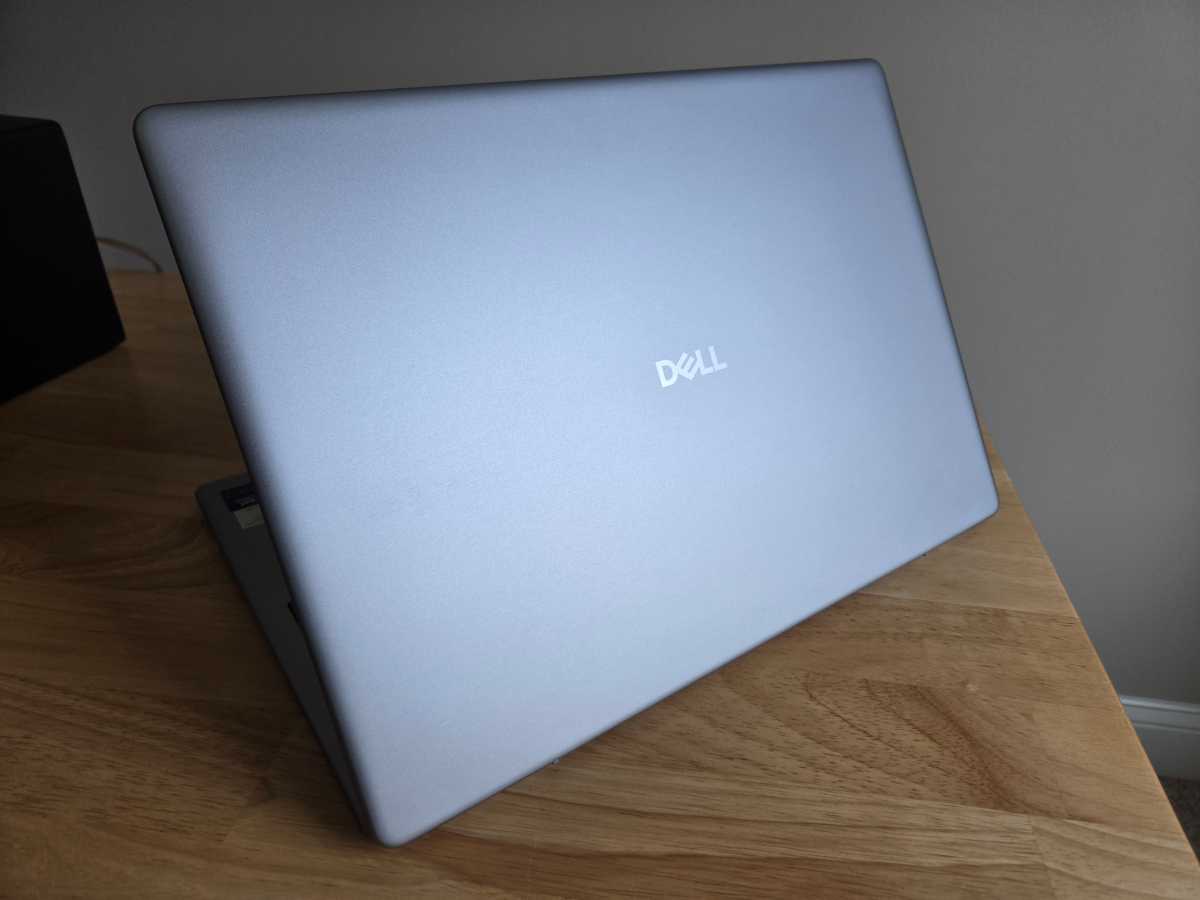
IDG / Chris Hoffman
The Dell 16 Plus is well designed and solid. It’s a little on the heavy side at 4.12 pounds, but it’s also a little on the larger side at 16 inches, so that makes sense. The 0.67-inch thickness is very reasonable, and the laptop doesn’t feel particularly thick.
The chassis is made from a combination of materials — aluminum on the lid and base and plastic on the palm rest and bezel. The plastic feels nice — it has a slightly matte texture.
The hinge works well, and it opens to 180 degrees so you can lie this machine flat. As you rotate the hinge open, the back of the laptop (the part near the hinge) tilts up, and that angle helps you type comfortably.
The “Ice Blue” color scheme here looks a lot like silver to me — with a bit of a blue sheen in the right lighting.
This machine has good build quality — there’s nothing bad about it. But it doesn’t have the high-end touches (all metal, or super lightweight carbon fiber or ceramic-based “ceraluminum“) that high-end, more expensive machines deliver.
Dell 16 Plus: Keyboard and trackpad

IDG / Chris Hoffman
The Dell 16 Plus has a good keyboard. The key travel feels good and there’s a crisp “clicky” action when I press down on them. It’s responsive and nothing feels mushy. There’s also a white keyboard backlight you can use.
The inclusion of a full-size number pad at the right side of this 16-inch laptop keyboard always feels a little divisive. On the one hand, many people choose 16-inch laptops so they can have a full-size keyboard with a number pad, and that input method is particularly useful for certain workflows — if you spend a lot of time using spreadsheets or otherwise entering numbers. On the other hand, some people aren’t fans of the number pad and may prefer a laptop without one. Personally, I like to see a number pad on a 16-inch laptop where there’s room for one.
The touchpad is nice and large, and it feels responsive. I do think a nice glass-surface touchpad feels smoother to glide your finger over — this is a plastic surface — but it’s a large and responsive touchpad.
The model we received doesn’t have a touchscreen, so keep that in mind — if you want that, you’ll have to hunt down a Dell 16 Plus model that does have one or choose a different laptop. I do prefer having a touch screen — just as an option — but I know many people don’t care.
Dell 16 Plus: Display and speakers

IDG / Chris Hoffman
The Dell 16 Plus we reviewed has a 16-inch 2560×1600 IPS display with an anti-glare coating and up to 300 nits of brightness along with a 120Hz refresh rate. That’s a good resolution and I was pleased to see a higher-than-60Hz refresh rate here.
The anti-glare coating works pretty well, and it helps make up for the slightly dim display. But it’s perfectly readable inside. Even with harsh sunlight, the anti-glare coating does a good job and ensures you don’t need to crank up the brightness just to see the screen.
The display looks fine — it’s a perfectly serviceable display. But it’s an entry-level display. For this review, Dell also provided me with a Dell 16 Plus model with a higher-end display so I could compare the options. Specifically, they loaned me a model with a touchscreen and a mini-LED display with 600 nits of minimum brightness — model number DB16250. This model looks great: The colors were noticeably more vivid, and it was noticeable even on the default desktop background. However, that’s a pricier display, and it also has a glossy coating that produces more reflections.
The Dell 16 Plus has a dual-speaker setup that produces clean, clear audio with a fairly loud maximum volume. I don’t hear any distortion at the maximum volume, so this is a good speaker setup. It isn’t a high-end speaker configuration, naturally: I test all the laptops I review with both Steely Dan’s Aja and Daft Punk’s Get Lucky. The instrument separation in Aja wasn’t as crisp as you’d hear on the kind of speakers audiophiles love, and the punchy bass in Get Lucky was lacking. But that’s standard for laptop speakers, and these are solid speakers for the price range. I always want to pair a good pair of headphones or external speakers with my laptops.
Dell 16 Plus: Webcam, microphone, biometrics
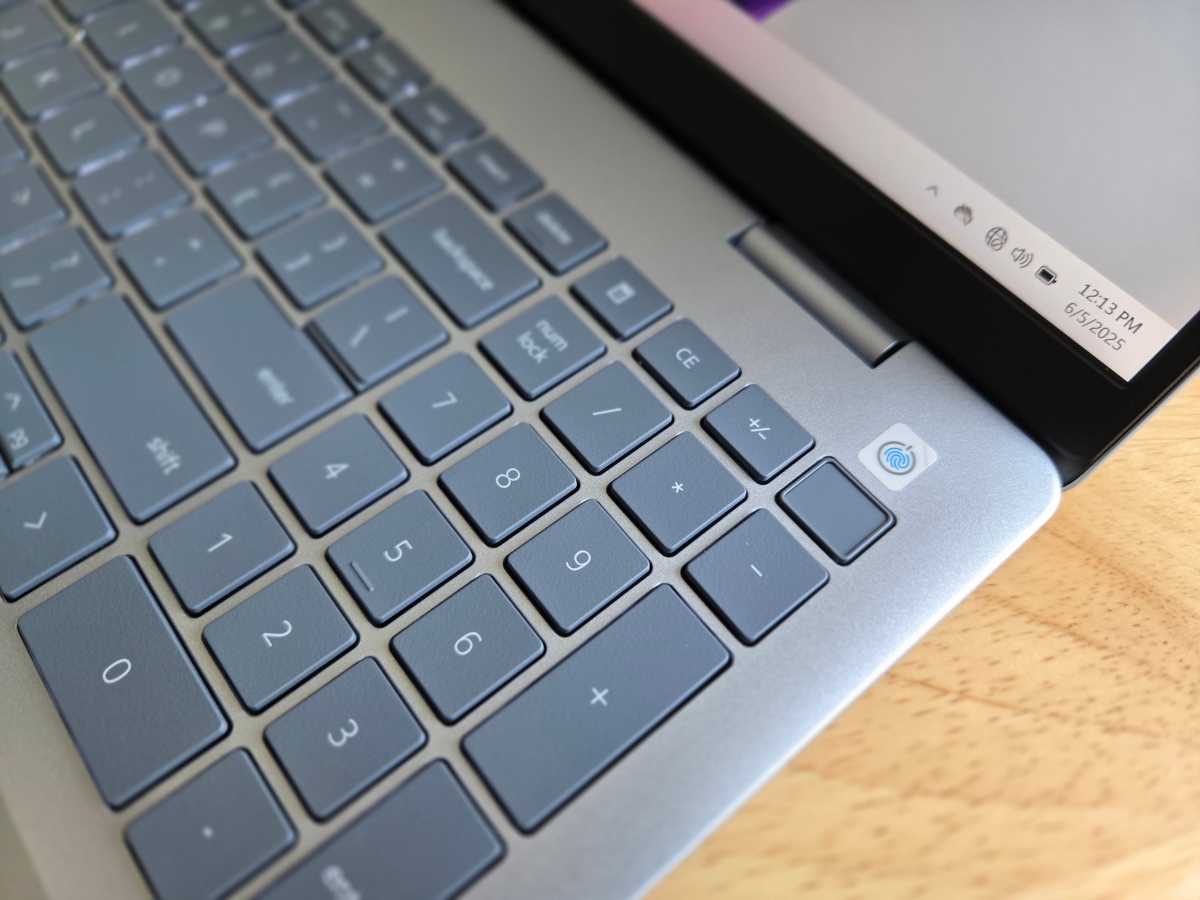
IDG / Chris Hoffman
The Dell 16 Plus has a 1080p webcam with a physical webcam shutter, and that’s always a great privacy feature to see! The webcam itself is clear enough — there’s more visual noise than I’d expect to see on the kind of high-end webcam you often see on business laptops, but it’s more than good enough for online meetings and video calls.
Dell says the dual-array microphone setup here has AI noise reduction. In practice, the microphone sounds unexpectedly good, with clear audio and solid noise cancellation of PC fans whirring away in my office.
The Dell 16 Plus model we reviewed has both a fingerprint reader at the top-right corner of the keyboard and an IR camera for facial recognition. Having access to both types of biometrics is particularly impressive at this price range.
Dell 16 Plus: Connectivity
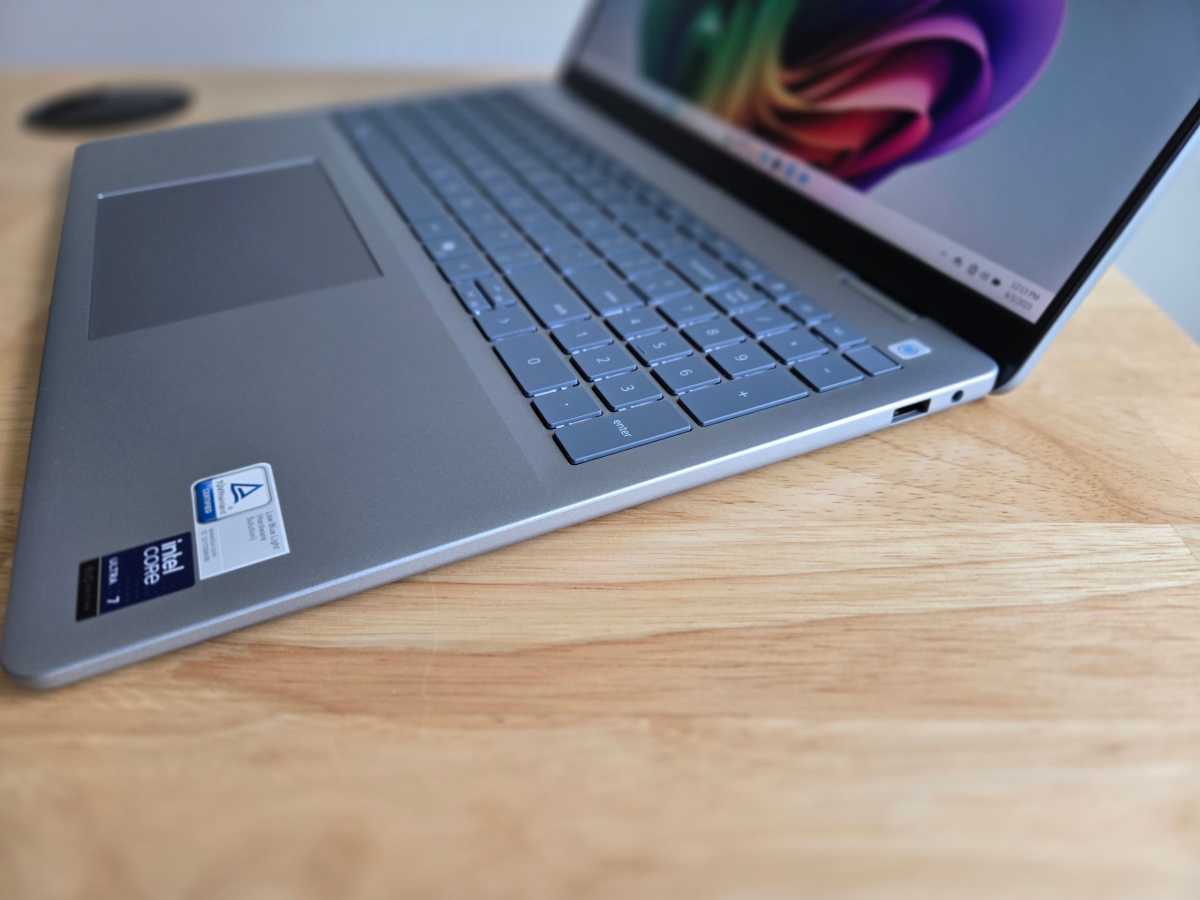
IDG / Chris Hoffman
The Dell 16 Plus’s connectivity is decent but a little lacking. On the right side, this machine has a combo audio jack along with a USB Type-A (USB 3.2 Gen 1) port.
On the left side, it has an HDMI 2.1 out port along with two USB Type-C ports — one of them supports Thunderbolt 4 and one supports USB 3.2 Gen 2speeds. While the ports are clearly labeled and it’s nice to have Thunderbolt 4 as an option, it would be nice if they were both Thunderbolt 4 ports.
This machine charges via USB-C. Since that’s the case, you’ll always have to plug the charger into a port on the left side. That’s a little annoying. You’d have more flexibility if Dell had put a USB Type-C port on each side.
All in all, this is a limited port selection for a 16-inch laptop. It’s not hard to imagine that many people would want more ports — for example, a second USB Type-A port or even a microSD card reader. You can always get a dongle or dock, but be aware that you may have to if you need a lot of peripherals.
Thanks to Lunar Lake, this machine is future-proof with Wi-Fi 7 and Bluetooth 5.4 support, which is great to see.
Dell 16 Plus: Performance
The Dell 16 Plus provided good performance in desktop productivity apps — Google Chrome, Microsoft Edge, Microsoft Word, Slack, and all the usual apps I find myself using all day. Lunar Lake systems deliver good performance in real-world desktop usage.
As always, though we ran the Dell 16 Plus through our standard benchmarks to see how it performs.
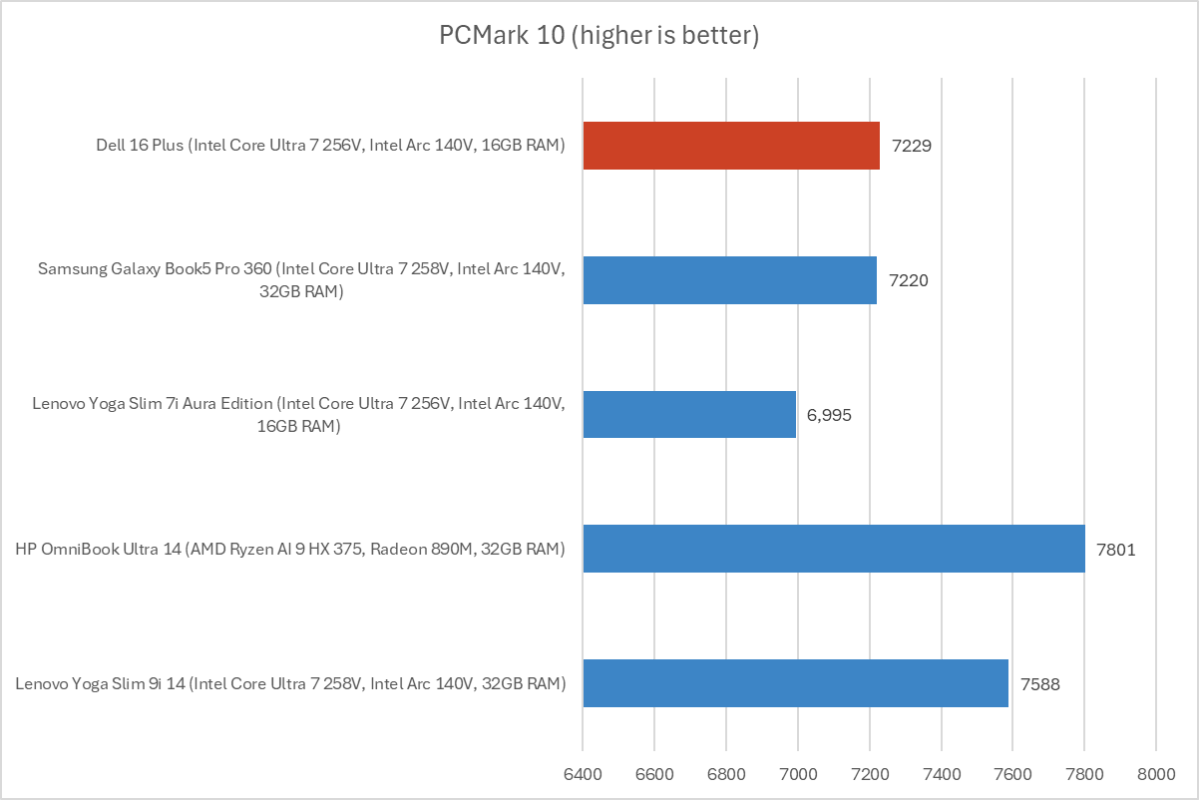
IDG / Chris Hoffman
First, we run PCMark 10 to get an idea of overall system performance. With an overall PCMark 10 score of 7,229, the Dell 16 Plus delivered solid performance — lower only than systems with faster CPUs.
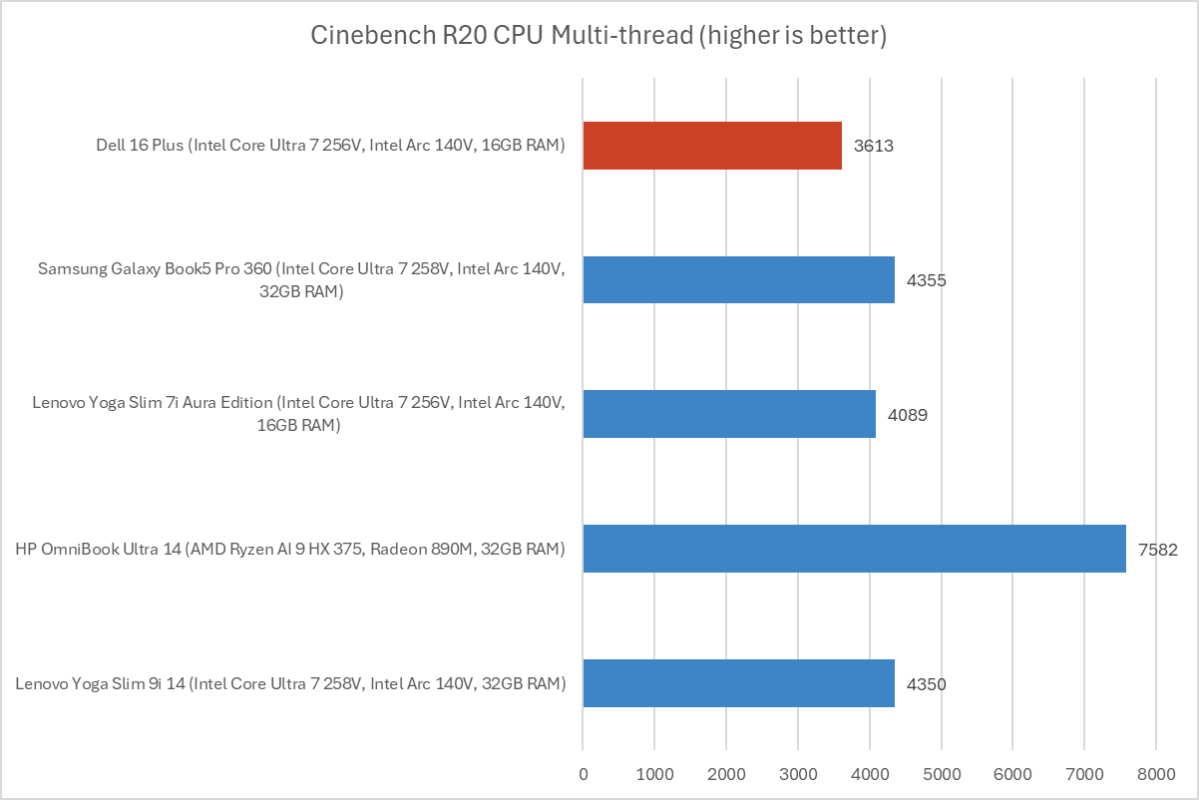
IDG / Chris Hoffman
Next, we run Cinebench R20. This is a heavily multithreaded benchmark that focuses on overall CPU performance. Since it’s heavily multithreaded, CPUs with more cores have a huge advantage. That’s what we saw here — systems with Lunar Lake CPUs come in behind. Unfortunately, this is substantially lower multithreaded performance than last year’s Dell Inspiron 16 Plus with its Meteor Lake CPU.

IDG / Chris Hoffman
We also run an encode with Handbrake. This is another heavily multithreaded benchmark, but it runs over an extended period. This demands the laptop’s cooling kick in, and many laptops will throttle and slow down under load. That may be what happened here — the encode process took 1,773 seconds (nearly 30 minutes) to complete the encode process. It lags behind other Lunar Lake-powered systems we’ve tested.

IDG / Chris Hoffman
Next, we run a graphical benchmark. This isn’t a gaming laptop, but it’s still good to check how the GPU performs. We run 3Dmark Time Spy, a graphical benchmark that focuses on GPU performance. With a score of 3,978, the Intel Arc 140V graphics here delivered excellent graphics performance for integrated graphics.
Overall, the Dell 16 Plus delivered perfectly usable desktop productivity performance thanks to Lunar Lake. But Lunar Lake’s big downside — low multithreaded performance in heavy multithreaded workloads — is on full display here. This machine seems to be a bit behind other Lunar Lake-powered systems, and it’s far behind last year’s model on this benchmark.
Dell 16 Plus: Battery life
The Dell 16 Plus has a 64 Watt-hour battery, which is on the smaller side for a 16-inch laptop. Still, since this machine packs power-efficient Lunar Lake hardware, we’d expect to see it deliver some serious battery life.
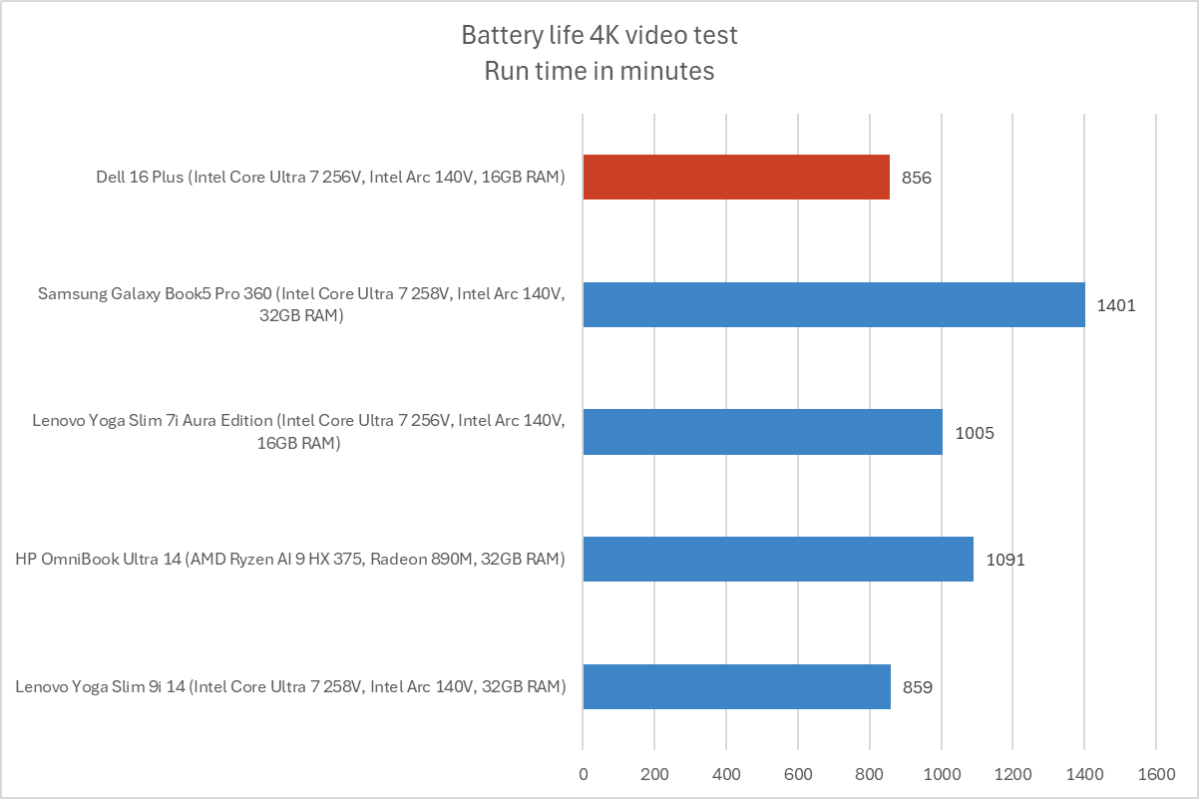
IDG / Chris Hoffman
To benchmark the battery life, we play a 4K copy of Tears of Steel on repeat on Windows 11 with airplane mode enabled until the laptop suspends itself. We set the screen to 250 nits of brightness for our battery benchmarks. This is a best-case scenario for any laptop since local video playback is so efficient, and real battery life in day-to-day use is always going to be less than this.
The Dell 16 Plus lasted 856 minutes, or just over 14 hours. That’s on the lower side for a Lunar Lake-powered machine, but it’s likely that the combination of a smaller battery and perhaps a display that is sucking more power is contributing to that — it’s tough to say. While you’ll get lower battery life than this in the real world, I don’t think this is a serious issue — a 16-inch laptop that’s over four pounds feels designed to be used at a desk a lot of the time. You can get plenty of time away from an outlet.
Dell 16 Plus: Conclusion
I like the Dell 16 Plus a lot. But when it comes to value, the price is a big factor: At $1,149 retail, I’m a lot less excited than the $799 or less price I see right now! It’s not just about the internals: Decisions like including both a fingerprint reader and an IR camera show Dell going above and beyond what it needs to at this price range.
Looking over the benchmarks, I wasn’t as thrilled as I expected to be: Lunar Lake is all about battery life improvements, but the base Dell 16 Plus uses that efficiency upgrade to drop the battery size. I reviewed last year’s Dell Inspiron 16 Plus with Meteor Lake, which was packing a larger 90 Watt-hour battery, and that machine delivered longer battery life along with stronger multithreaded performance. (Of course, last year’s model is heavier and this new Lunar Lake-powered system has better graphics performance.)
It’s true that this system does have an NPU for Copilot+ PC AI features, but Microsoft hasn’t made those a must-have upgrade yet. I wish Intel’s Lunar Lake was more of a no-brainer upgrade.
Still, this is a solid PC. At a sale price of $799 or so, none of these concerns feel like they matter.




